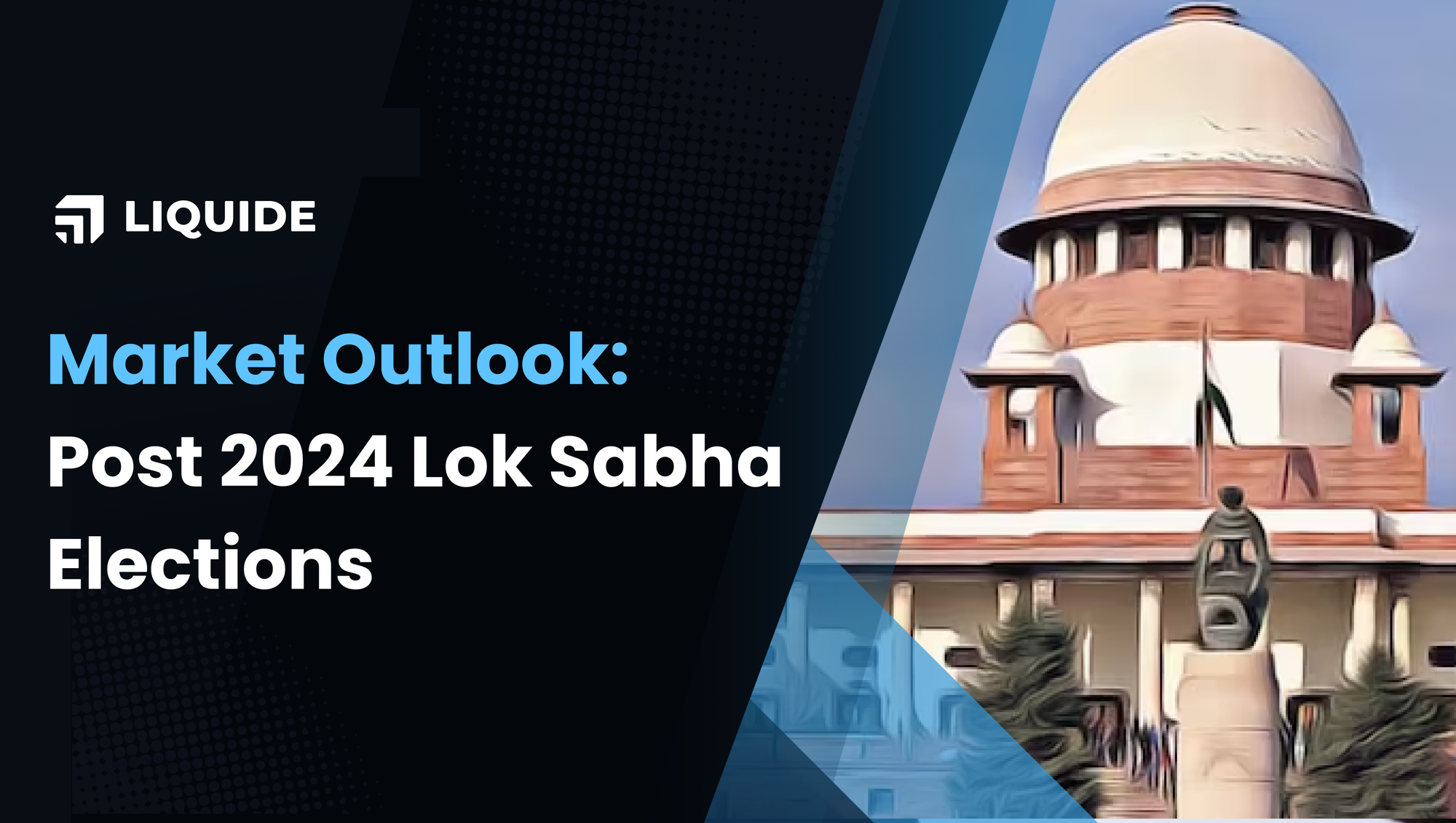Market Outlook Post 2024 Lok Sabha Elections | Unlock Key Trading Strategies & Investment Opportunities
Uncover the potential effects of Lok Sabha exit polls on Nifty and Sensex. Learn key investment strategies and precautions for navigating market volatility.

The stock market's dramatic shift this week left investors reeling. What began as a wave of optimism following Monday’s predictions turned into widespread panic by Tuesday as the NDA fell short of the expected 350 seats, securing only about 293 seats. The euphoria and subsequent disappointment unfolded within a mere 24 hours.
Going forward, the recent highs of Monday—76,738 (Sensex) and 23,338 (Nifty)—serve as medium-term resistances. Conversely, the lows of Tuesday—70,234 and 21,281— will act as strong support levels, until significant news developments occur over the next couple of weeks.
What lies ahead?
Although the BJP and its allies haven’t secured an outright majority, they’ve emerged as the largest faction, leading the opposition by approximately 60 seats. As a result, the NDA is well-positioned to form the government. However, expect twists and turns until a clear verdict emerges, and the markets will closely react to every development in this regard.
Traders should approach the markets cautiously, as volatility will remain high. Foreign portfolio investors (FPIs) are likely to maintain a negative to neutral stance in the short to medium term. Expect stability once government formation settles and normalcy returns.
Do’s & Don’ts For Investors and Traders
Despite the election-related uncertainty, India's overall economic indicators remain strong. Factors such as inflation, interest rates, tax collections, and GDP growth all align favourably, suggesting resilience and potential for long-term growth. Historical data also shows that India’s economy has successfully prospered under various political structures, including coalition governments.
As a long-term investor, here are some strategic steps you can take to navigate the market volatility during election-related uncertainty:
- Quality Blue-Chip Stocks: Accumulate quality blue-chip stocks when market sentiment is negative due to election-related uncertainty. Historically, markets have rebounded after elections, so consider buying during dips.
- Focus on Fundamentals: Pay attention to company fundamentals (earnings, growth prospects, dividends) rather than short-term market noise.
- Diversification: Diversify your portfolio across sectors and asset classes. This helps mitigate risks associated with specific events or sectors.
- Sector Preferences: While re-rating in PSU, capital goods, railways, infrastructure, and defense sectors seems unlikely until policy clarity emerges due to stretched valuations, sectors like FMCG, automotive, pharmaceuticals, and private banks, may gain prominence.
- Avoid Panic Selling: Knee-jerk reactions to market drops can lock in losses. Long-term investors are better off staying invested and weathering the volatility, which tends to smoothen out over a few weeks.
Also read: Markets React to 2024 Lok Sabha Elections | Insights & Future Outlook
Here are key considerations for short-term traders:
- Stay Informed: Monitor political developments closely. Unexpected changes can impact market sentiment very quickly, leading to sudden price swings.
- Risk Management: Set stop-loss orders to limit potential losses. Use trailing stop losses to safeguard your gains as prices move favourably, allowing for profit protection while keeping the trade open for further gains.
- Sector Rotation: Be flexible and adapt to changing market dynamics. Certain sectors may perform better or worse during election cycles.
- Shorten Trade Durations: Typically, directional movements in such scenarios are sharp yet brief, making it challenging to distinguish between a genuine trend and a mere pullback. Consider shortening trade durations to protect investments from excessive market swings.
- Refrain from Speculating Market Movements: Trying to predict market directions can lead to risky decisions. Focus on responding to market signals as they occur.

